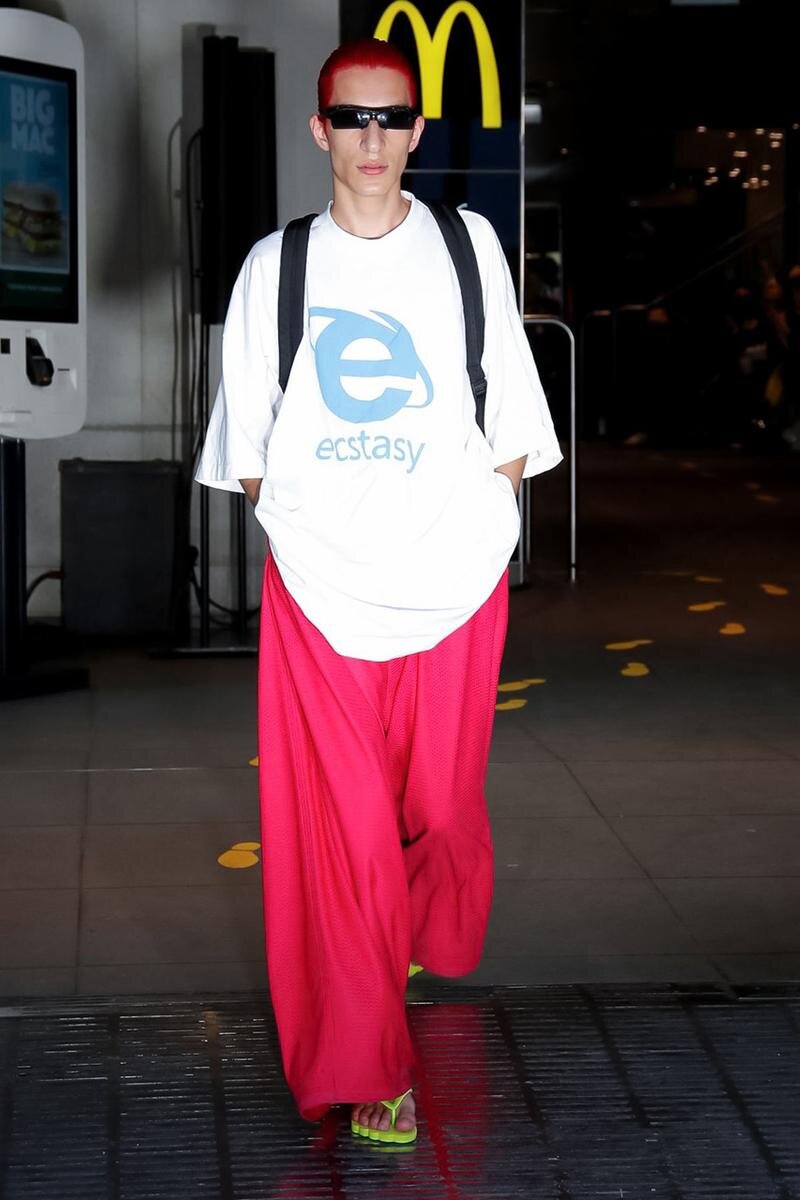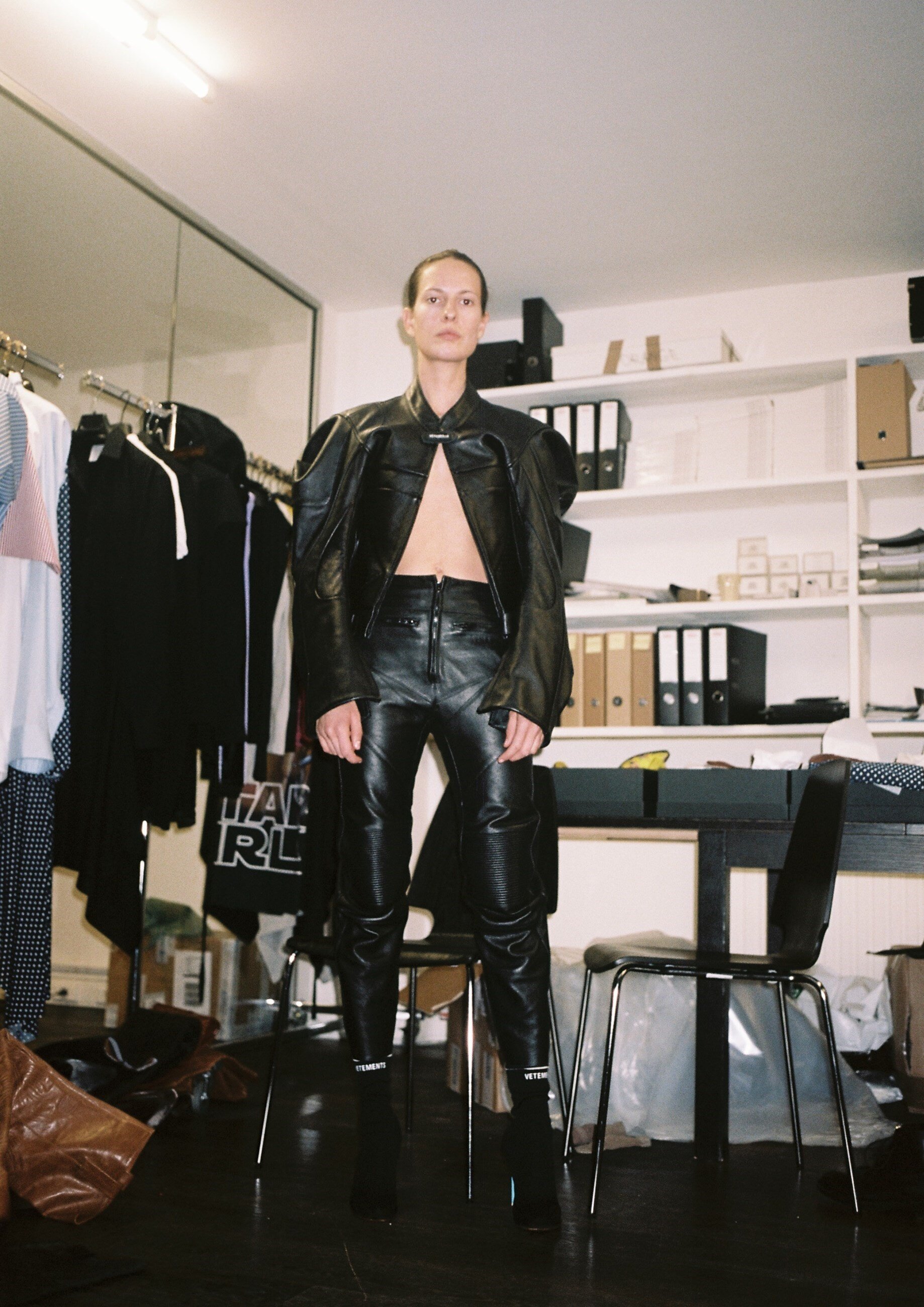I Already Miss Demna Gvasalia’s Vetements
Vetements Spring/Summer 2016
There isn’t a brand in fashion today that draws as strong of reactions as Vetements was able to in its heyday.
Vetements was the first “high” fashion brand to capture everything that defined internet fashion culture. Vetements’s constant oscillations between tongue-in-cheek criticisms of the rest of the industry and nihilistic runway shows summed up the feelings of older Zoomers better than anything. And when you add in the brand’s knack for creating easily identifiable trends, you have the perfect brand to dominate the early days of the Instagram explore page.
Vetements Spring/Summer 2020
Vetements tapped into Zoomer nostalgia, unearthing specific memories and motifs before flipping them to make them appropriate for a modern context. I hadn’t thought about Internet Explorer in years before they made their ecstasy hoodie, which felt like an early 2000s bootleg hoodie you could find in your local mall. There’s just something about their designs that don’t feel elitist, despite their price tag. You don’t have to dig deep and understand some 19th century art movement to understand what’s happening, you just had to live through the early 21st century. Of course, there’s more to the brand than just youth nostalgia, but it’s easy to just enjoy Vetements because it looks good.
The Spring/Summer 16 Lookbook is perhaps the epitome of Vetements’s existence at the start of trends. Five years later, my Instagram timeline looks like this lookbook — everything from the way the models are standing to the natural working environment to the flash and clarity of a film camera. Vetements interpreted youth energy so naturally, it’s no wonder they would be able to drive trends for years to come.
Vetements Spring/Summer 2016
What’s more, the criticism of Vetements directly mirrors the criticism that youth culture always faces. Cultural gatekeepers are always reluctant to let new ideas eclipse their status quo — that’s why they’re gatekeepers. For many high fashion fans, what does it mean if a brand whose name is the literal french translation of “clothes” can release a screenprinted hoodie of the Internet Explorer logo for $1200? Is that ruining the “art” of clothing?
For this reason, there’s always a disconnect between Vetements’ popular image and Vetements’ runway shows. Presenting a show in a Mcdonald’s is one thing; using it as a critique of capitalism is especially off limits in the world of luxury fashion (Also, sending out invitations in the form of Vetements-branded condoms really captures what this brand is all about). But that’s what made Vetements the brand so perfect for younger consumers. It wasn’t just making clothes that were interesting and on-trend; they were playing into the paradoxical nature of a business critiquing globalism, and doing it genuinely. Fashion naturally has an infatuation with youth culture, but where so many other brands fall short of Vetements is in trying to capture the true spirit of Gen Z — the sort of dejected-yet-not-quite-defeated, but still tongue in cheek humour. Brands that only draw inspiration from youth culture or, or attempt to resurrect their own youth (ie. Raf Simons, Gosha Rubchinsky (RIP), etc.) don’t quite compare because their attitude is different.
Vetements Spring/Summer 2016
In so many ways, Vetements was the truest high fashion brand for the youth. Eventually though, kids grow up, and in the same way, brands that once appealed to them age out. Demna Gvasalia’s exit in 2019 was the perfect clean break, like a teenager moving out exactly on their 18th birthday. Equal parts hated and loved during its time (even though the brand is still active, I’m significantly less interested in it without Demna at the wheel. I hope they’ll prove me wrong and establish themselves as a true force, but certainly this is the end of an era), I truly believe that the fashion industry will look back at Vetements run from 2015 to 2019 as the iconic movement that it was.




